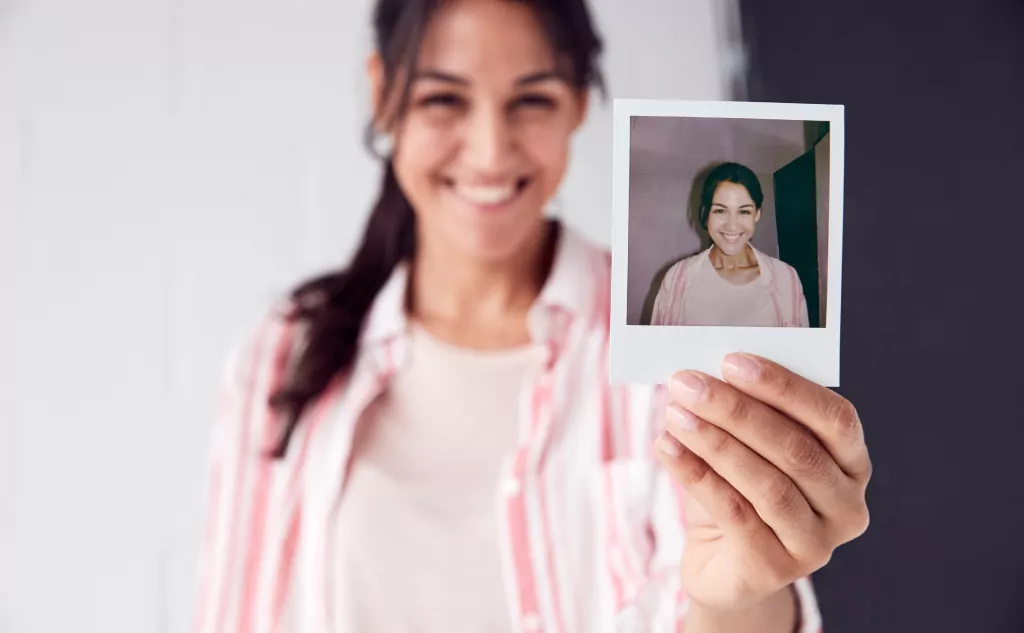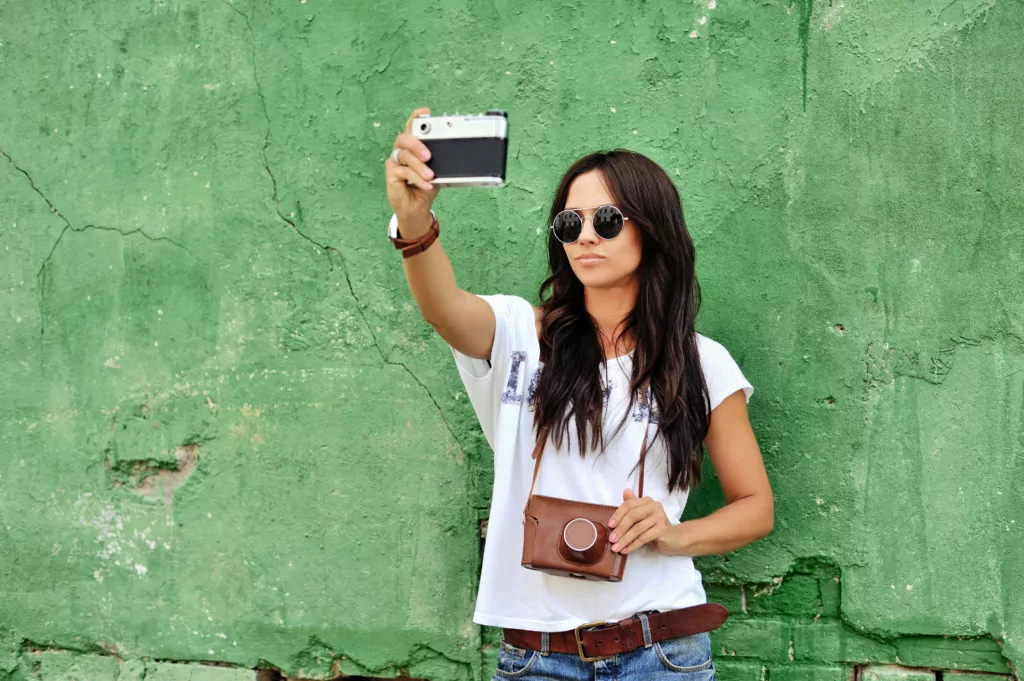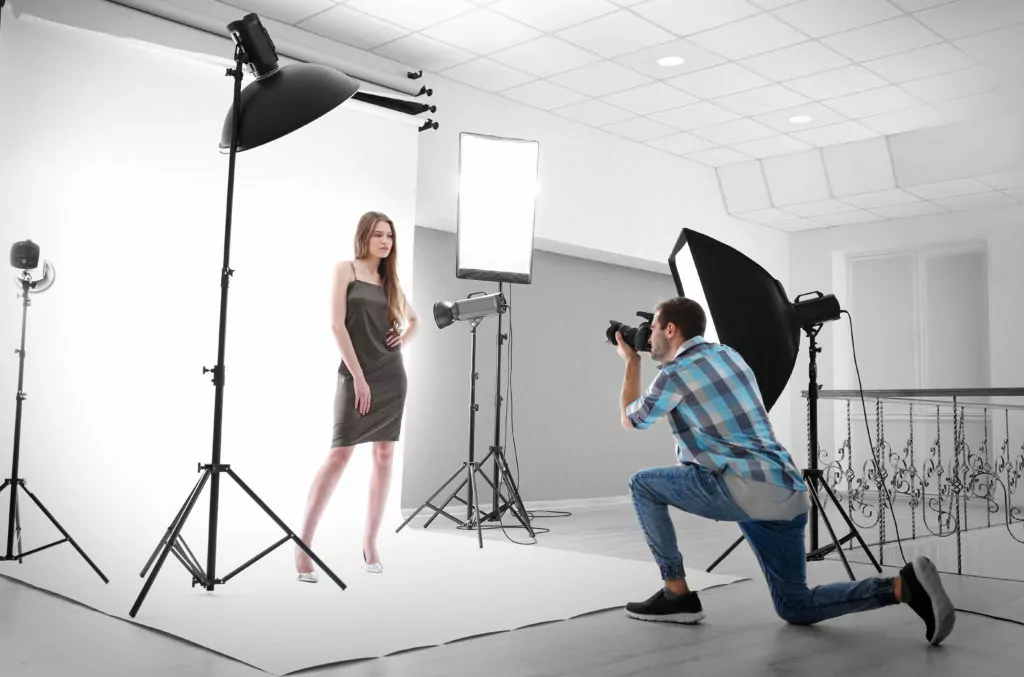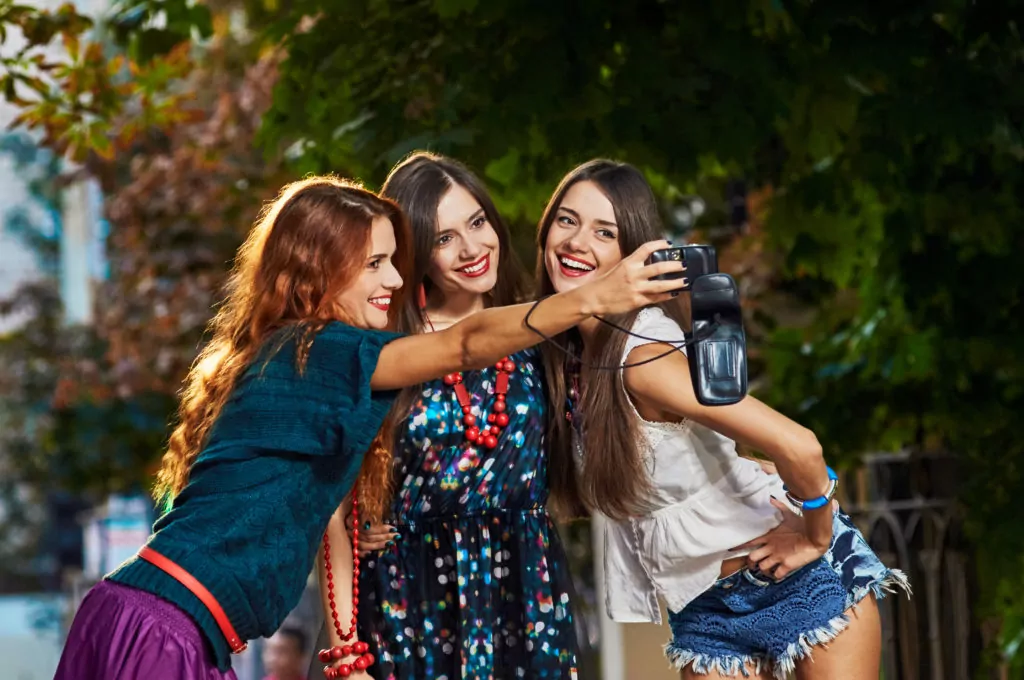Here’s why you might look fatter in pictures than in the mirror:
There are two reasons you might look fatter in a picture than in a mirror.
The first is that cameras can distort images and make you look strange in the picture.
The second is that seeing yourself in a photograph can induce a different psychological reaction as compared to seeing yourself in a mirror.
So if you want to learn all about why you might look fatter in pictures than in the mirror, then this article is for you.
Keep reading!
- 90s Camera Quality vs. 80s & 70s: Why So Poor?
- Filters on Photos: How to Remove?
- Polaroid Pictures: Safe to Cut?
- Pictures on Phone vs. on Computer: Different?
- Taking Polaroid Picture of Phone or Computer Screen: How to?
- Snapchat Camera Quality: How to Improve It?
- Mastering Upside Down Photography: Innovative Selfie Tricks with Your Phone
- Pretty in Mirror, Ugly in Flipped Phone Pictures?

Is It Entirely Psychological That You Look Different in Pictures Than in Mirrors?

Arguably, the biggest factor at play in your perception of a photo of yourself is just that, perception.
There is a lot of psychology behind how you see yourself in a photograph, and surprisingly, much of it can be traced back to mirrors.
This is going to be a bit of a trip, so hang in there. Far and away, the majority of the time that a person sees their own face is in a mirror.
Most people have mirrors in the bathroom. We use them to brush our teeth, fix our hair and do so much more. It’s part of daily life.
Looking at ourselves in pictures is less common, even in the age of the selfie.
Here’s why that matters.
Mirrors reverse images.
What you look like in a mirror is exactly backward from how you look in a photo and to other people. That doesn’t really matter in an objective sense, but it actually can mess with your head a little bit.
When you see a picture of yourself, the image is not flipped. Even if the picture doesn’t look objectively worse than you do in a mirror, it looks strange.
Any deviation from expectation or comfort can ultimately cause a reflexive thought process that is unfavorable. Sometimes, you will dislike a photo of yourself only because it is different from your reflection.
You can actually test this. Try taking selfies until you like one. Then, try taking pictures of yourself in the mirror until you like one.
This isn’t a perfect experiment because there are a lot of variables at play, but a lot of people will have a similar result.
It will take fewer pictures in a mirror to find something they like, and that largely ties back to this concept of psychology.
There’s another way to think about it.
The psychology of pictures is analogous to what happens in your head when you hear a recording of your own voice.
Most people don’t like such recordings because it sounds so different from their own expectations.
When you speak, you hear your voice internally, not externally. When a recording changes the nature of how you hear your own voice, it sounds foreign.
The change is away from the norm and your expectations, and the normal knee-jerk reaction to that difference is negative.
You can think a photo of you looks worse than your reflection even when everyone else thinks it looks better. In this case, it is entirely psychological.
Why Do You Look Pretty in the Mirror but Ugly in Flipped Phone Pictures?

Do you think your face looks pretty in the mirror but ugly and asymmetrical in flipped phone pictures?
There’s a reason for that.
You see yourself in a mirror every day, so you perceive this as your original image.
Therefore, when you see yourself in phone pictures, your face seems to be turned the wrong way, since that’s how you’re used to seeing it.
As a result, your brain is the one telling you that the image is ugly.
This is psychological.
Learn all about why it seems like your face looks pretty in the mirror but ugly and asymmetrical in flipped phone pictures here.
Does the Camera Change the Image So That It Appears Different Compared to a Mirror? (3 Things)

With all of that said, not all of your impressions are psychological.
A picture can look worse than a reflection by objective standards, and that’s because a lot of things happen when you take a picture.
#1 Lensing
Cameras use lenses. By definition, lenses have a curvature to them, and that curvature bends the image.
Cameras are designed to do this to get more light into the image that can be recorded. This is true for digital and analog cameras, and it all comes down to physics.
For anything you see, you are able to see it because your eyes can detect the photons of light that come off of the object.
Your eyes are so sensitive that they can detect light from a single photon (which is pretty cool). Since individual photons carry the light, more photons equate to more light.
There’s another way to think about this. The photons are carrying the physical information that hits your eye and is ultimately translated by your brain. More photons equate to more information in anything that you see.
How does this come back to camera lenses?
The lenses are designed to redirect photons.
This allows a camera to capture more photons through the small area that is the viewer.
Ultimately, using the lens provides more raw physical information for the photograph, and that usually leads to a more detailed and better photo.
Increasing the number of photos that go through the lens can help image quality, but it comes with some trade-offs. The biggest is distortion.
The lens literally redirects the light, which changes its path. That means that the image recorded in the photo is physically different from what you would see with your naked eye. Distortion is inherent to the process.
Cameras use a lot of tricks and technology to account for the distortion, but the results are never perfect. So, every photo ever taken of you has a distorted image.
The nature and extent of the distortion depend on the camera, the lighting, the correction software, and plenty of other things.
Since the camera is literally adding more of you than you would typically see, it’s normal for the camera to “add pounds” as the saying goes. This is an actual consequence of physics.
#2 Digitization

Another issue ties to digitization.
Cameras are pretty much all digital these days. That means that the camera sees the light for the photo. It then turns that light into digital information.
The camera goes even further to manipulate the digital information via algorithms to try to make everything look better. This is especially true with phone cameras. The phones apply a ton of digital manipulation to any photo you take.
The manipulation is designed to produce prettier photos, but the process really does change the final image.
Sometimes, these changes make you look worse. Other times, they change how you look enough to trigger the psychological responses mentioned above.
#3 Aspect Ratio

Aspect ratios are related to digitization, but it’s a specific issue that happens a lot.
Cameras create photos of certain resolutions. This isn’t just about pixel counts; it’s about the shape of the overall image.
That shape is defined by the image’s aspect ratio. It’s a mathematical comparison of the length and height of the photo.
A common aspect ratio for photos is 16:9. That means the photo is a little less than twice as wide as it is tall. This shape is a rectangle, and that matters.
In order for the picture to have a rectangular shape, it has to be digitally pushed into that shape. This can cause distortion all on its own. Life isn’t made out of perfect rectangles, so forcing all pictures to be rectangular changes how things look.
This is kind of like maps of the world. You’ve probably seen at some point that a rectangular map of globular earth creates distortion. It’s why Greenland looks the size of South America, even though Greenland is way smaller in reality.
This is a distortion that happens when you create an image that is a different shape from the actual object in the image.
Typically, a camera will default to displaying photos in an aspect ratio that is as close to the shape of the camera lens as possible.
This minimizes distortion, but the digital aspect ratio is never actually identical to the camera lens shape. Some distortion is inevitable.
What’s more important is that software often changes the aspect ratio away from the original picture.
When this happens, it amplifies the distortion in the photo considerably, and the result can make you look a much different shape than you really are. Distortion can lead to all kinds of wonky results in the picture.
Why Do Photos Look Different on Your Phone Than on Your Computer?

Your pictures look different on your phone than on your computer indeed.
Computers and phones use different hardware to display and understand images.
Each device has a different screen, so the image will appear differently on every device.
On top of that, there are countless software differences between the two devices that can lead to many image discrepancies.
Learn all about why pictures look different on a phone than on a computer here.
- 90s Camera Quality vs. 80s & 70s: Why So Poor?
- Filters on Photos: How to Remove?
- Polaroid Pictures: Safe to Cut?
- Pictures on Phone vs. on Computer: Different?
- Taking Polaroid Picture of Phone or Computer Screen: How to?
- Snapchat Camera Quality: How to Improve It?
- Mastering Upside Down Photography: Innovative Selfie Tricks with Your Phone
- Pretty in Mirror, Ugly in Flipped Phone Pictures?

